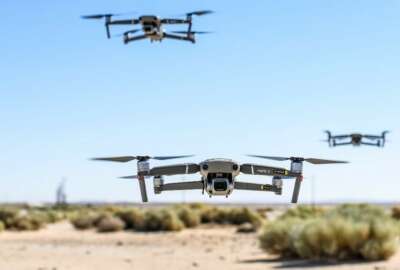Army delays $22B augmented reality goggle program
The program is a partnership between the Army and Microsoft.
The Army is delaying its $22 billion program with Microsoft aimed at giving soldiers goggles that provide them with augmented reality and real-time data.
The Integrated Visual Augmentation System (IVAS) is being pushed back by a full year, after expecting to field the goggles this fall. The Army’s Program Executive Office — Soldier announced in a Thursday press release that it will now plan to field the capability by fall of next year.
“The Army is fully committed to its partnership with Microsoft to advance specific technologies to meet operational requirements and maximize warfighter impact,” the release states. “The Army conducted an adversarial electronic warfare and cybersecurity test in September 2021, and plans to execute testing regularly throughout 2022. This decision allows the Army and industry team to continue to enhance the IVAS technology platform ensuring soldiers achieve overmatch in multi domain operations.”
The IVAS program is already under the scrutiny of government watchdogs. The Defense Department’s Inspector General announced it was launching an investigation into the program on Oct. 4.
“The objective of this audit is to determine whether Army officials are producing and fielding IVAS units that meet capability requirements and user needs,” the DoD IG’s memo states. “We may revise the objective as the audit proceeds, and we will also consider suggestions from management for additional or revised objectives.”
Congress also has some concerns about the program. The 2021 defense authorization bill reduced the amount of funding requested by the Army for IVAS by about a quarter of a billion dollars. The Army asked Congress for more than $1.1 billion in 2021. The NDAA knocked that down to about $900 million.
The bill also asked the Army to deliver a report outlining the IVAS acquisition strategy, unit cost and production schedule. They also asked the director of operational test and evaluation to evaluate the program.
“Due to the large quantity of hardware, software, and funds allocated for the program, as well as an aggressive development schedule, the committee expects the Army to utilize this technology in developing any new heads-up displays for air and ground vehicles,” the Armed Services Committees wrote in their report explaining why they wanted information on the program.
This is the second major program delay announced by the Army this month. The service is also slowing down its Integrated Pay and Personnel System — Army by nine months.
The IVAS program is supposed to revolutionize the way soldiers can operate in the field and pair soldiers with much of the work the DoD is doing to incorporate data into its weapons systems.
“The IVAS prototype heads up display packs a variety of impressive capabilities into one package. Night vision and thermal scope settings are both available at the press of a button,” an Army release states. “Soldiers can share topographical imagery or 3D maps of an objective at any time, whether rehearsing or in the field. A soldier can pair the IVAS to a weapon, enabling the weapon to be aimed using a reticle projected into their field of vision rather than holding it at the shoulder and peering through the scope. All members of a platoon can know where all of their teammates are at a given time, no matter how dark or dense the surrounding terrain.”
The Army has been using Microsoft’s HoloLens technology paired with a variety of sensors to create the goggles. According to Microsoft, by February 2021, the company had collected almost 80,000 hours of soldiers feedback over four rounds of testing prototypes.
That input helped Microsoft tweak the goggles for better features.
“Early prototypes included a HoloLens headset that engineers had affixed cameras to, goggles with weights attached, and various 3D-printed devices,” a Microsoft press release from earlier this year states. “The devices met the Army’s requirements of rugged, waterproof and shockproof. But no one had considered, for example, that the headsets needed to allow users to brace a rifle against a cheek.”
Microsoft did not provide a comment by the time of publication.
Copyright © 2025 Federal News Network. All rights reserved. This website is not intended for users located within the European Economic Area.
Scott Maucione is a defense reporter for Federal News Network and reports on human capital, workforce and the Defense Department at-large.
Follow @smaucioneWFED







